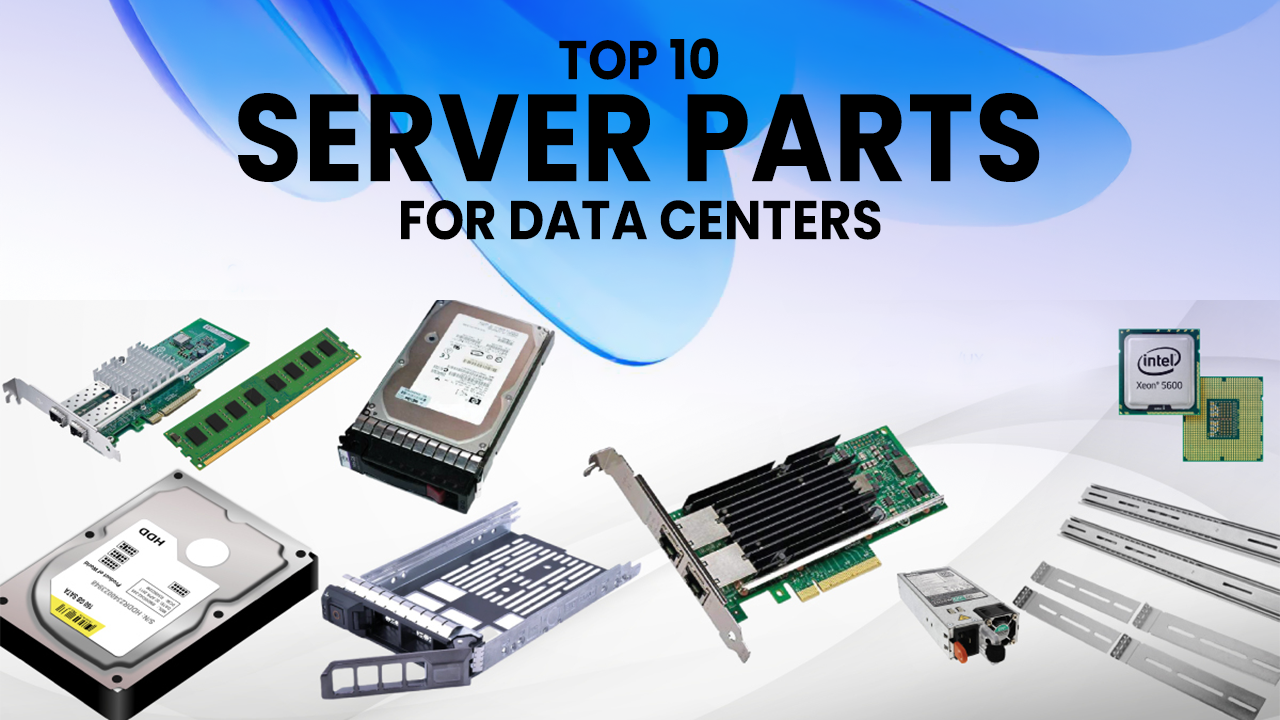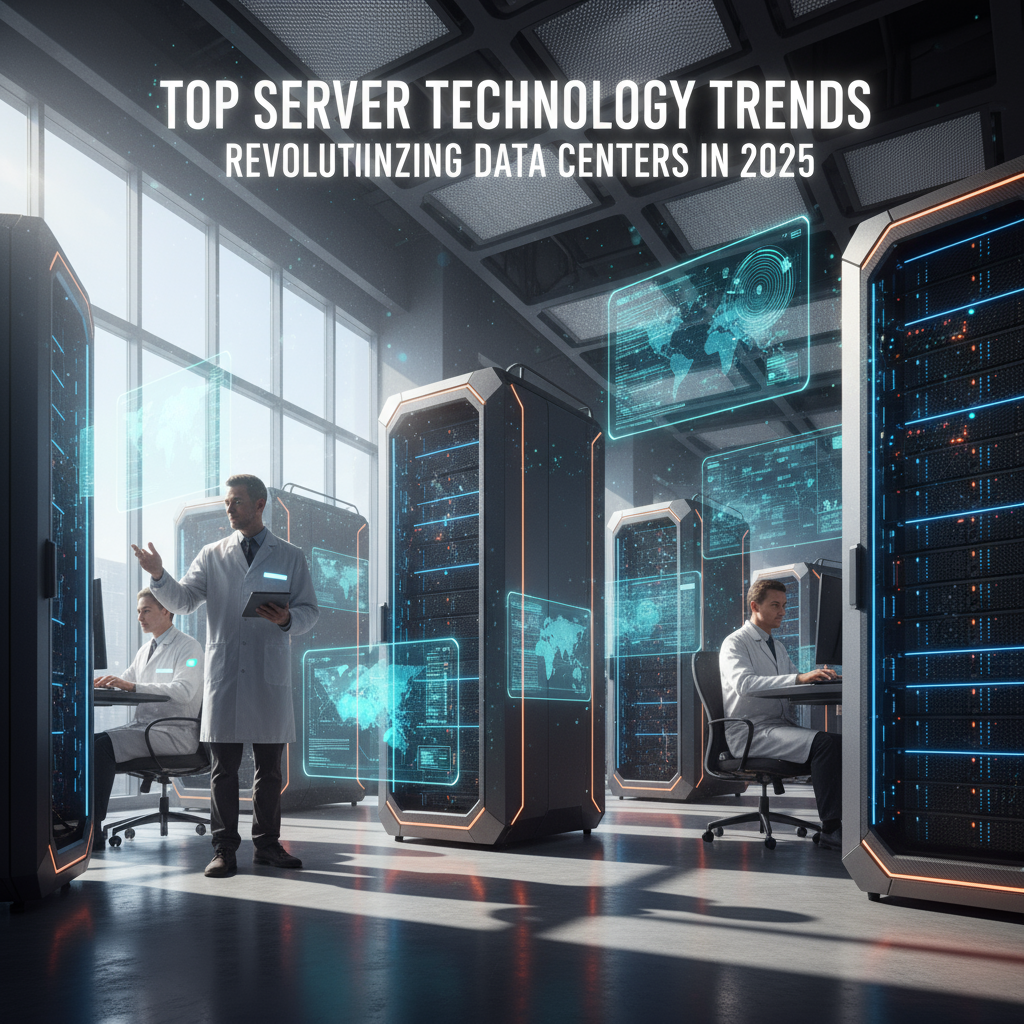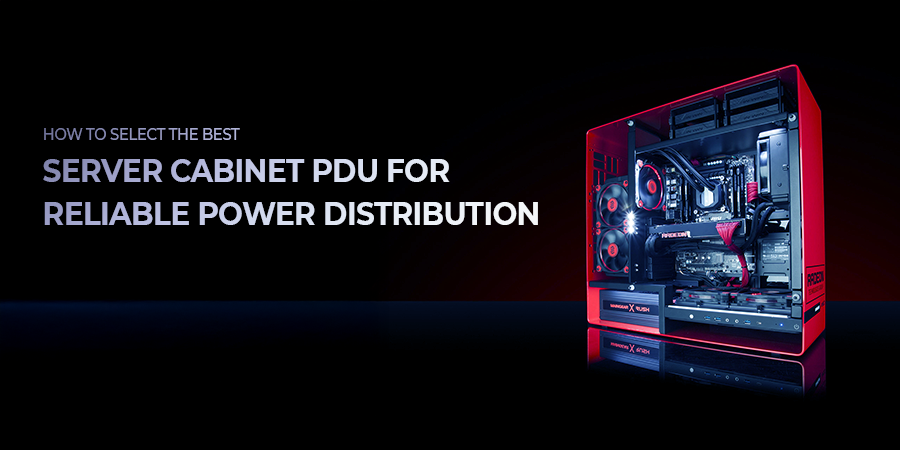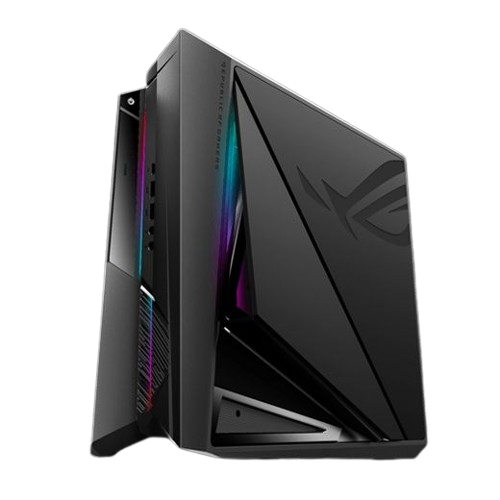Top 10 Server Parts for Data Centers in 2025

Server Tech Central
8/27/2025

I still remember my first time managing a small server room. Initially, everything worked fine until the database crashed and the network interface card gave up. You must be thinking why it happened suddenly; it is a valid question. You must know that not all server parts function the same. Imagine if a data center is still relying on outdated hardware to handle AI workflows and 100G traffic; it is simply impossible.
In 2025, choosing the right server components makes all the difference between a smooth operation and a shutdown.
Data centers are evolving to support cloud computing and 100G networking. For this reason, selecting suitable server components to run an upgraded data center is challenging. This blog will cover server hardware parts that every data center must consider for high performance, reliability, and scalability.
Top Server Parts for Data Centers
Server components are the building blocks of a data center, determining performance, scalability, and energy efficiency. They directly affect how data is processed, forwarded, and stored. High-quality server parts are designed to manage workloads 24/7 with minimal failure. A data center without reliable server units is more likely to face systematic shutdowns.
Server hardware includes CPUs, server motherboards, memory (RAM), storage devices, network interface cards, RAID controllers, power supply units, cooling systems, chassis, and racks. We will discuss each of these components one by one.
1. Server Processor (CPU)
A server processor, or CPU, is a computer's brain, executing tasks and performing calculations. It serves as the foundation of all computer operations. Processors are the most important component of your server, but it can be tricky to know what to prioritize across performance, manageability, and security.
Server processors are particularly designed to manage complex workloads in a data center, e.g, database management. We will take a look at examples of Intel Xeon and AMD EPYC 9965 server CPUs, following modern data center needs in 2025. When choosing a CPU, core count, clock speed, cache size, and architecture are key factors.
Processor | Cores/Threads | Base Clock | Cache | TDP | Features | Use case |
Xeon 6980P | 128 / 256 | ~2.2 / 3.9 GHz | ~500W | AI inference optimised | High-throughput analytics | |
EPYC 9965 | 192 / 384 | ~2.15 / ~3.7 GHz | 384MB | 500W | Zen 5c, 3nm, PCIe 5.0, DDR5, CXL 2.0 | Hyperscale cloud, AI, HPC |
2. Server Motherboards
The server motherboard is a central printed circuit board (PCB) in a server system that facilitates communication between storage, CPU, memory, NICs, and power systems. It manages networks, stores data, and runs cloud services. Server system boards prioritize performance, reliability, and remote management, making them suitable for modern data centers. Motherboards are essential, as they determine the amount of RAM required, the type of central processing unit, and the number of storage drives you can connect.
Here are some compatible server motherboards for data centers in 2025:
Motherboard | Socket/CPU support | Key Features | Use case |
Supermicro H13DSG-O | Dual SP5 / AMD EPYC 9005 | PCIe 5.0, 12x DDR5 DIMMs, 2x 10G LAN, IPMI, CXL 2.0 support | High-performance computer, virtualisation |
Supermicro X13DEM-I | Dual LGA 4677 / Intel Xeon 6 | 16x DDR5 ECC, PCIe 5.0, Dual 10G LAN, IPMI, TPM, BMC | AI inference, data analytics, HPC |
3. Server Storage Drives
Storage servers are core components of a data center, serving as a central storage house for data and other digital workloads. They ensure long-term storage of applications, databases, and operating systems. High-speed drives offer low latency and improved operational speeds (IOPS), suitable for big data analytics. Besides that, they allow scalability as demand grows in data centers.
Storage devices with RAID support ensure data redundancy (store information in multiple places) with minimal downtime. Significantly, disaster recovery and backup are two key functions of server storage drives in case of hardware failure. They can evaluate performance based on drive capacity, scalability, and workload optimization.
We will look into suitable storage drives for data centers in 2025.
Drive type | Interface | Key Feature | Use case |
NVMe SSD (U.2/U.3 | PCIe Gen 4/5 | Ultra-fast IOPS, low latency | Databases, virtualisation |
SAS SSD | 12Gbps SAS | High endurance, scalable | Enterprise apps, virtual environments |
EDSFF E1.S / E3.S | PCIe Gen 4/5 NVMe | High-density, efficient cooling | Hyperscale data centers |
4. Random Access Memory (RAM)
Storage drives offer permanent storage, while RAM is the server’s short-term memory. It stores the information the CPU needs to operate and execute commands. This short-term memory is crucial to server performance. When there is more RAM, the server can handle lots of tasks at once without slowing down.
When talking about performance, 1 MT/s (Mega Transfers per Second) is used to measure the speed of RAM at which data can be transferred. In this way, a RAM rated at 5600 MT/s can do 5600 million data transfers per second. DDR5 ECC Registered (RDIMM) or Load‑Reduced (LRDIMM) RAM modules are considered to be the best options for data centers in 2025.
RAM module | Clock speed | MT/s | Performance |
DDR5-5600 | 2800 MHz | 5600 MT/s | Fast |
DDR5-6400 | 3200 MHz | 6400 MT/s | Faster |
5. Network Interface Cards (NICs)
A network interface card is a hardware component that allows a server or storage device to connect to data center networks. It sends and receives data from various devices such as switches, routers, and servers. Crucially, it supports high-speed data transfer in the form of 10G, 25G, 40G, and 100G, as well as Ethernet, ensuring low latency and high bandwidth. Servers that are equipped with 100G network interface cards are capable of sending and receiving data at 100 gigabits per second.
Here are some examples of modern server NICs for data centers in 2025:
NVIDIA ConnectX-7: With a speed of 100 GbE–400 GbE, it is ideal for high-performance computing.
Intel E810-XXVDA2: With 25GbE speed, it is suitable for virtualization and cloud workloads.
6. RAID Controllers
A RAID controller is a hardware or software component that manages multiple storage devices (HDDs and SSDs ) in a RAID (Redundant Array of Independent Disks) configuration. Its basic function is to store data across multiple drives to ensure data redundancy in case of drive failures. Hardware RAID controllers are commonly used in data centers.
They are installed as a PCIe expansion card in the server, connecting to various drives through SAS/SATA cables.
They improve the performance via faster read/write speeds, monitor drive health, and rebuild arrays. The function of RAID controllers depends on the cache memory and the maximum number of drives supported in a server. For example, Broadcom MegaRAID 9560-16i offers 16x SAS/SATA drive support and up to 8 GB cache, making it compatible with servers of a modern data center.
There are also integrated RAID controllers built into the motherboard to provide basic RAID support (0, 1, 10).
7. Power Supply Units ( PSUs)
A power supply unit is an essential server component that converts AC (alternating current) into DC (direct current) used by network devices, CPU, and RAM. A reliable and efficient power supply unit is necessary for high-voltage power conversion and a consistent supply to server components in a data center.
To ensure modern servers use redundant power units to provide immediate backup in case of any failure and to prevent downtime. Besides that, they are hot-swappable, allowing replacement without shutting down the system. Advanced PSUs enable real-time power monitoring and thermal management (heat, temperature), enhancing the efficiency of data centers in 2025.
A power supply unit must have sufficient wattage and efficiency rating to support all components. For example, the Supermicro PWS-1K41P-1R, with 1400W and 80 PLUS Platinum efficiency and a redundant and compact design, is used in rack servers.
8. Chassis & Racks
A server chassis is a physical enclosure that houses all the internal components of a server (CPU, motherboard, storage devices, etc). It protects hardware and enables efficient cooling and airflow. Server racks are cabinets particularly used to organize multiple servers vertically, saving space. It increases space efficiency and improves cable management.
Types of Chassis & Racks
Chassis: Tower chassis, rackmount chassis, blade chassis.
Racks: Wall-mount racks, enclosed racks, and portable racks.
Final Thoughts
Server parts are the building blocks of modern data centers. Whether you are managing AI workloads or hyperscale applications, selecting the right server components is the primary objective. At ServerTechCentral, we emphasize careful consideration of a data center's specific needs and growth plans. From a powerful CPU to redundant power supply units, these components form the backbone of a high-performance server infrastructure in 2025.





